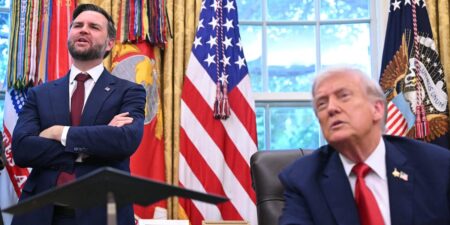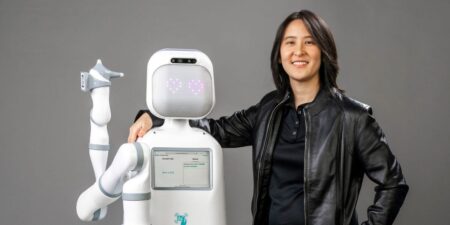Someone close to me has multiple sclerosis, a diagnosis that once felt devastating. It turns out, though, that MS is no longer the debilitating condition it used to be. That’s mostly thanks to a small handful of doctors and researchers.
Many years ago, Dr. Stephen Hauser and his research team discovered how B cells were crucial to the damage caused by MS. They developed new treatments, including one medicine that is literally saving the life of someone I love dearly. (If you need hope here, read his amazing book.)
I met Dr. Hauser a few days ago at a charity dinner in San Francisco, where he spoke about the breakthrough. I got to thank him for this miracle of science, while trying not to cry.
During his speech, Dr. Hauser went out of his way to mention new fees being imposed on the H-1B visa process. He noted that two of his top researchers, who helped discover the MS breakthrough, came to the US on these visas. Without that influx of expertise to America, this MS discovery might never have happened.
Versions of this shock and realization have been reverberating across San Francisco and Silicon Valley this week. The tech industry hires a lot of overseas talent, and companies have relied on H-1B visas a lot over the years. The new $100,000 fee could make applications harder, especially for startups. Will this end Silicon Valley’s role as a hub for the world’s most talented technologists and entrepreneurs?
After the initial panic, some in the industry are realizing that this may not be as awful as first expected. There are alternatives for attracting tech talent. One US startup founder told me he hires overseas and just lets employees work from their home countries. Remote work for the win!
Then, there’s the O-1 visa, which has already quietly become a go-to hiring tool in the tech sector.
“The visa that’s been fueling Silicon Valley is O-1, not H-1B,” Guillermo Rauch, CEO of AI startup Vercel, wrote on X this week.
The O-1 visa is for individuals with extraordinary ability or achievement in fields such as science, arts, education, and business. The application fee costs about $1,000.
Rauch came to the US on an O-1 visa, and he said the application process was hard because he had to prove extraordinary abilities through evidence such as a book he wrote, press coverage, and letters of recommendation from leaders in his field.
Despite such requirements, issuance of O-1 visas has roughly doubled in recent years, far outpacing the growth of H1-B visas. O-1 applications also have a pretty high approval rate.
Marvin von Hagen, cofounder of AI agent startup Interaction Company of California, is in the US on an O-1 visa. He said gathering evidence for this visa is harder than paying the $100,000, but for top startups, the O-1 “simplifies things and takes the luck out of it.”
Yang Fan Yun, CEO of AI browser startup Composite, said his company uses “alternative visa pathways,” such as the O-1, which offer more flexibility and a clearer route to permanent residency.
“It makes sense that O-1 usage has grown as the H-1B is maxed out and made completely unfeasible,” said Ava Benach, founding partner of Benach Pitney Reilly Immigration, one of the top immigration law firms in Washington, DC.
O-1 visas require employers to be more selective about who they hire because the standards are higher. “They are not going to be able to replace 100 H-1Bs with 100 O-1s,” she warned, while noting that O-1 approvals are high because lawyers like her often weed out candidates ahead of time.
Still, Benach said O-1 visas can be a good option for startups because these young companies are often hiring sophisticated employees to develop new technology and original strategies — rather than run-of-the-mill coders.
That certainly applies to Rauch and his company Vercel, which develops and runs highly technical AI services.
“This country is so great and so worth fighting for, that I put an immense amount of work into my application,” Rauch wrote this week about his O-1 experience. “The best possible immigration policy will balance keeping the bar really high, ensuring people who love this country, culture, and values, and are willing to work hard, get their shot at the American dream, but never doing so at the expense of those already here.”
Silicon Valley operates on the cutting edge of technology, so it makes sense that the bar for overseas talent should be high.
For the US as a whole, though, these H-1B changes and other recent moves send a bad message, according to Benach.
“The new $100,000 tax on H-1B employment will certainly mean a decrease in the migration of global talent to the US,” she said. “Along with the arrests of Korean workers, well-publicized ICE round-ups, and alarming rhetoric from the administration, the $100,000 tax will further contribute to make the US less desirable for employers in search of the best global talent.”
Sign up for BI’s Tech Memo newsletter here. Reach out to me via email at [email protected].
Read the full article here
















